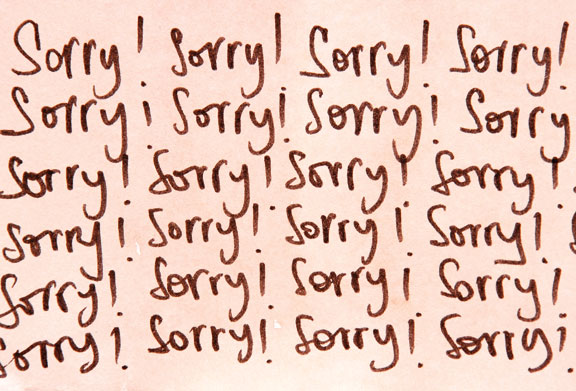Fast Forward - January 2016
AD-ITIVES
Advertising Arithmetic
Publishers woo advertisers with in-depth reader metrics, money-back guarantees
 Advertisers want only one thing from the space they purchase in print publications: business. Even internet giant Google thought enough of print ads to spend roughly $1 million on them in 2012. But once an issue is out and in the hands of readers, how is an advertiser to know for sure whether any new or repeat business has come as a result of a particular ad?
Advertisers want only one thing from the space they purchase in print publications: business. Even internet giant Google thought enough of print ads to spend roughly $1 million on them in 2012. But once an issue is out and in the hands of readers, how is an advertiser to know for sure whether any new or repeat business has come as a result of a particular ad?
Publishers are eager to keep page counts up, and some have begun making what might seem like a pie-in-the-sky promise: to go beyond offering conversion rates and track reader engagement via website visits, coupon redemption and product purchases. Some of these deals are even coming with a guarantee: if ROI doesn’t meet a pre-set standard, ads run free of charge.
To boost the ROI of advertising, publishers suggest incorporating one or more of these elements into a print campaign:
-Include a call to action. Contests and giveaways, particularly those that offer tech products, are highly motivating.
-Offer solutions. B2B clients seek solutions to their challenges, and products such as sales ideas and tips, or white papers, can be the link that connects potential customers to your business.
- Follow up on leads within one week. Research has revealed that connections with up to 90 percent of clients who respond to ads are lost if they aren’t contacted in that time.
TECH TALK
Pairing Mobile Apps With Traditional Advertising
KAYAK promotes mobile app travel tools with cheeky online video ads
With an aim to make travel less stressful from beginning to end, KAYAK has introduced a new tool called Trips to its mobile app experience, and the online booking service is using humorous “Travel Hacks” online videos to promote it. Trips is the latest to join KAYAK’s suite of mobile app tools, along with Explore and Price Forecast.
Dubbed a “travel assistant” tool for keeping itineraries, travel documents and destination information in one place and for sharing with others, Trips is the digital equivalent of a butler, according to KAYAK’s tagline. The videos, developed by creative agency The Adventures Of, meld with KAYAK’s “Travel Problem Solved” campaign.
Keenly aware of its services’ global appeal, KAYAK has produced the videos for Trips in English, French, Italian, Spanish and German. View them at www.kayak.com/travelhacks
Five Minutes With Jeff Anderson, MAS, COO of Focus Branding Group
When it comes to personalized service, how can distributors break through the wall of technology that seems to keep them at arms’ length from prospective and current clients? Jeff Anderson, MAS, chief operating officer at Focus Branding Group (UPIC: FOCUSBG) in Portland, Oregon, doesn’t shy away from connecting with clients on a digital level—in fact, he sends out regular email promotions that provide clients with ideas for incorporating products into campaigns. But he still believes a personal touch provides the best outcome, and he shared his thoughts with PPB about keeping tech-happy clients engaged.
PPB Modern methods of communicating—email, social media and text—now seem fully integrated into many of our business relationships. What examples of this do you see on a daily basis?
Anderson I’m seeing more of my young buyers choosing to communicate with short emails, texts and even Facebook messages. It has been far more common in the past few years to have a new buyer tell me what they want, instead of asking for advice or ideas. I will get text messages from clients both inside and outside normal business hours; texting is something that Millennial buyers are very comfortable with.
PPB How does it affect your ability to do good work for your clients; or, how do you work to prevent lost opportunities for clients who gravitate toward “one-click” promotional buying experiences?
Anderson It makes me nervous when I have a client who will go to our website, pick an item and email me an order. I’m never unhappy to receive an order, but I think it is my responsibility as a business partner to consult with the client to make sure that what they are ordering will best fit their need.
We will always follow up and make the attempt to consult with the buyer, to make sure that what they want to order is the right tool for the right job.
For example, I have a client who sent me a text message for pens that he needed for a conference; I called him and discussed the order and his event. I asked him what else he had planned and he was happy to tell me that he was going to order 200 books from Amazon for client gifts. I explained that we could provide him with those books with his logo on the cover and a full-color page insert with whatever information he would like—and it would cost him less money.
He ordered the custom books and called me after his event to thank me for calling him to learn more about his needs; and, he has since reordered the custom books three times. Having a happy client and growing our business is win-win situation.
PPB What do you feel clients miss out on by avoiding person-to-person engagement (phone calls, in-person visits)?
Anderson Being able to have face-to-face meetings with clients allows us to better understand each other; it allows me to better understand the business, organization or event; and it allows the client to see how I can best help them with their needs. There have been many times that I been discussing a project with a client and I find that there is something else that I can help them with. This saves them time and frustration, while at the same time the personal communication strengthens my relationship with the client.
PPB Are there any benefits to communicating with clients via technology?
Anderson Emails help to keep a record of the conversation and make it easy to send art and proofs.
The ability to send mock-ups or presentations via email is invaluable, and it also allows us to show options and ideas. I don’t ever want to return to “the good old days” before email, but I hope that we don’t progress to the point that verbal interaction becomes a thing of the past.
PPB How can our industry preserve the importance of consultative selling without alienating tech-happy buyers?
Anderson We will need to find the balance. As consultants we need to prove ourselves and demonstrate our value for the client. The Millennial buyer is not going to abandon the habit of communicating in 140 characters or fewer, so we need to be able to communicate in the manner in which they are comfortable.
As an industry we need to promote our consultative side. Buyers can go online and buy mugs and t-shirts, but if they experience the benefits of working with a professional they will see that spending a little time discussing their goals will pay big benefits, both in the short term and in finding the right fit for future needs.
MARKET SHARE
Do You Read Me?
Send emails that catch readers’ eyes without getting caught by spam filters.
When your marketing email is one of thousands in a sea of RFPs, meeting requests, hot deals and subscription pitches, the subject line has to jump out at the reader. But how do you write a compelling line that won’t be swept up in the spam filter? Read on for some ways to catch the reader’s attention, and hopefully set a course for a profitable business relationship.
Do tease the pitch.
“Hundreds of our customers keep coming back for [specific product].”
Now your recipient is thinking, “Hundreds? That’s a lot of customers. Does this product fit my needs? Of course it does! Are there any left for me?”
Do read their minds.
“Win over your customers with a better-quality [insert product here].”
You can anticipate a prospect’s needs just by doing a little research. If you know they were dissatisfied with a product that didn’t come from you, introduce them to the one that will erase those bad memories.
Do ask the question.
“Can we meet this week about promoting your [specific event or program]?”
The call to action is up close and personal, and the reader likely now wants to know the following: who you are, how you know about the event or program, and how you can help them successfully promote it.
BRANDABLE
Short Stories
Startup gives brands a longer lifespan on Snapchat
The come-and-go premise of Snapchat has appealed to millions of users since its launch in 2012, but how do brands stay memorable on a platform that is built on impermanence? Startup company Naritiv, launched last year, aims to help companies form a more lasting impression with the help of popular Snapchat users, called creators. Together they create brand-specific content with Snapchat’s Stories feature.
The model follows Snapchat’s original purpose, which is for users to share their personal stories. With Naritiv, a creator shares his or her experience with a brand by posting photos and videos that are strung together in story form. Naritiv CEO and co-founder Dan Altmann says the project allows brands to see that if they can reach and influence potential customers in the earliest stages of brand awareness, those customers will remember the brands when deciding where to spend their money.
THE WATER COOLER
Don’t Be Sorry You’re Not Sorry
Are you an over-apologizer? It’s one thing to be genuinely contrite over a mistake at work or a poorly spoken word with friends and family, or even for bumping into strangers in a crowded store during the busiest gift-returning day of the year. But apologizing for things that don’t even require an apology can cast you in a negative light.
Lisa B. Marshall, host of The Public Speaker podcast, points out that when you apologize repeatedly at work, even when it’s a necessary action or request, you may be sending the signal that you are insecure or even unsure about the importance of your role in the workplace.
And women, it seems, apologize more than men. A study in the journal Psychological Science examined this phenomenon and found that women perceived they committed more offenses than men, though men apologized as much as women for things they believed they had done wrong.
To take those first steps past being sorry, it’s important to know why you’re saying it. Are you uncomfortable asserting authority over someone? Do you feel like meeting your needs is an imposition to someone else? When you can answer those questions honestly, and remedy the issue, you can move toward eliminating the need to apologize.
Proctor & Gamble shampoo brand Pantene turned workplace-apology syndrome on its head in a clever commercial, encouraging women to shed the mantle of assumed blame (which apparently is one of the primary triggers of over-apologizing) and view themselves as having the right to ask for what they need to get the job done—and to not be sorry about it.
Another important step is to take action, say journalists Claire Shipman and Katty Kay. In their book The Confidence Code, Shipman and Kay say taking action boosts confidence, which in turn reduces the instinct to apologize. More confidence leads to more action, which leads to more success. And who among you would ever apologize for hard-earned, well-deserved success?




